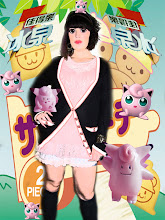Film studies Assessment one
Conventions Of The Western.
By Kelly Cantrell.
(623 words)
The western as a genre concentrates many set conventions, including exploration of the wilderness, early westernised society, a lone protagonist who in most cases has a conflicted past or who struggles with identity, corruption and good vs evil are also common themes of the western movie.
The western film is mostly set in America and is traditionally an American genre of film. The focus is usually on the main protagonist and their inner moral conflicts and outer struggles to find belonging and identity within a conflicted society. This person who will act as the flawed anti-hero in most case will be faced with a moral dilemma involving a community and or a family or local group of people. For example in the 1950’s western “Shane” the main protagonist had the moral decision of protecting a family or joining the other side, the community in this case, for more money. A similar situation arises in Clint Eastwood’s “unforgiven” in which the main protagonist is given the choice to seek out vengeance for a group of prostitutes against a gang of cowboys who have done them wrong, a corrupt authority is involved and classic western conventions are apparent when the protagonist is tested morally and results in the protagonist solving the problem at hand.
These themes also crop up in Ron Howards “the missing” (2003) in which again an outsider or loner who is struggling with his own inner demons must make a decision in order to preserve the status quo and save his granddaughter from a dangerous sect of sex traffickers, although in this carnation of the western the protagonist is being the hero in order to make peace within himself as well as with his estranged daughter.
All of these films have similarly themed endings which involve the main character going out into the wilderness and or being alone, having now been and done whatever it is they needed to, they come in mystery and leave in mystery.
Another example of this would be Sharron Stones character in “The quick and the dead” with the only difference being that she is a female as a pose to a male protagonist.
Speaking of women, in the western movie women are usually conveyed as blue eyed domesticated blondes and are usually depicted as being motherly and softly spoken. It’s rather interesting how the western film makes these associations with fairness of skin, hair and eye colour as being linked to purity and the side of good, whereas in comparison dark eyes, skin and hair are portrayed as bad, mysterious or corrupt.
The same thesis can be said about clothing in western movies, with the good guys having rather organic and natural looking outfits, such as animal skins, texture and colours that blend in with the wilderness almost, and then there are the darker shades of black and grey, tailored suits and clean cut appearances that seem to go hand in hand with the bad guys or the corrupted officials.
Most western films follow the classic narrative structure in which the status quo is affected, and then the protagonist is either tested or faced with a decision, the protagonist solves the problem but this may result in some form of transformation within the situation or the protagonist, such as feelings of sorrow, loneliness, regret, etc and then the result is usually the same, the status quo is fixed or changed and the protagonist is often returned to their usual position of being a lone wanderer out in the wilderness, this may be visually apparent or it could be depicted in a metaphysical manner such as with Tommy Lee Jones character in the missing.


No comments:
Post a Comment